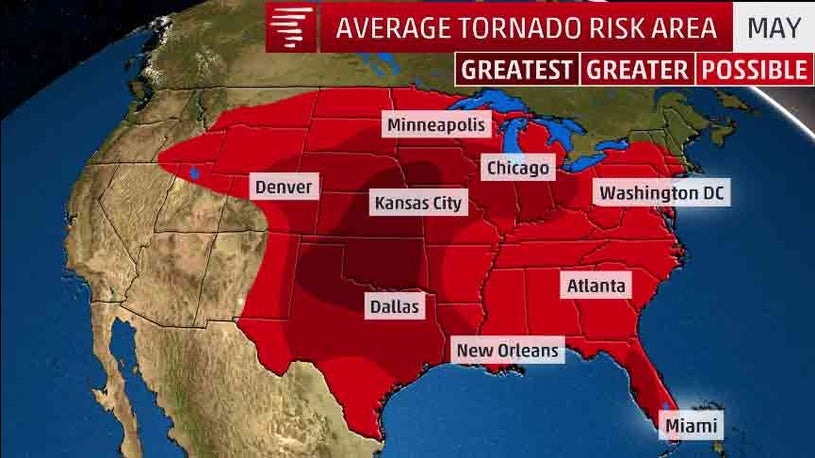Tornadoes are one of nature’s most powerful and destructive forces. These violent storms can cause widespread damage and pose a significant threat to life and property. For those who live in areas prone to tornadoes, knowing when tornado season occurs is crucial for preparedness and safety. So, when is tornado season?
**Tornado season varies depending on the region**, but generally, it spans from late winter to early summer. The peak season varies across different parts of the United States, with different states experiencing the greatest number of tornadoes during different months.
Understanding Tornado Season
What Causes Tornadoes?
Before delving into tornado season, it’s essential to understand the conditions that give rise to these destructive storms. Tornadoes typically form within severe thunderstorms, where there is a combination of atmospheric instability, moisture, and wind shear. The collision of warm, moist air from the Gulf of Mexico with cool, dry air from Canada creates an environment ripe for tornado development.
Factors Influencing Tornado Season
Several factors influence the onset and duration of tornado season. These factors include geography, topography, and climate patterns specific to each region.
For example, in the central United States, commonly referred to as Tornado Alley, tornadoes occur frequently due to the interaction between warm, moist air from the Gulf of Mexico and dry air from the Rocky Mountains. This collision creates an ideal environment for tornado formation. Tornadoes in Tornado Alley are most prevalent during the spring months of April, May, and June.
In the southern United States, tornado season typically occurs earlier in the year, around February to March, due to the warm air masses advancing northward from the Gulf of Mexico. In the northern states, tornadoes are most common during the summer months when warm and cold fronts collide.
Tornado Season by Region
Tornado Alley
Tornado Alley is a region in the central United States that is famous for its high tornado activity. It stretches from Texas and Oklahoma in the south to Nebraska and South Dakota in the north. **Tornado season in Tornado Alley usually begins in early spring and peaks in May and June**. During this time, the warm, moist air from the Gulf of Mexico collides with cold, dry air from the Rockies, creating the ideal conditions for tornadoes to form.
Dixie Alley
Dixie Alley is another region in the United States that experiences a significant number of tornadoes. It includes parts of the lower Mississippi Valley and extends into the Southeast. **Tornado season in Dixie Alley starts as early as February and can last until May or even June**. The warm, humid air from the Gulf of Mexico clashes with cooler air masses, leading to severe weather and tornado outbreaks.
Florida Peninsula
Florida Peninsula has a unique tornado season compared to other regions. Due to its warm and humid climate, tornadoes can occur throughout the year. However, tornado season in Florida typically peaks from late spring to early summer. This is when the sea breezes and thunderstorms are most active, creating the conditions for tornado formation.
Other Regions
Tornado season varies in other regions of the United States. In the Great Plains, including states like Kansas, Nebraska, and South Dakota, tornado season typically starts in late spring and can extend into early summer. In the Midwest, encompassing states like Illinois and Indiana, tornadoes are most common in the late spring and early summer months.
Frequently Asked Questions
Q: Are tornadoes more common at certain times of the day?
A: While tornadoes can occur at any time of the day or night, they are most likely to form between 4:00 pm and 9:00 pm. This is when the atmosphere is most unstable, and storms have the strongest updrafts.
Q: Can tornadoes occur in urban areas?
A: Yes, tornadoes can and do occur in urban areas. While cities and towns may disrupt the wind patterns that normally influence tornado development, the interaction between buildings and the atmosphere can actually intensify the winds and make the tornado more destructive.
Q: Can tornadoes happen outside of tornado season?
A: Although tornadoes are most common during tornado season, they can occur at any time of the year. In some regions, such as Florida, tornadoes can happen throughout the year due to the warm and humid climate.
Final Thoughts
Understanding when tornado season occurs is vital for individuals living in areas prone to tornadoes. By being aware of the peak season for tornadoes, residents can take necessary precautions, such as having a designated safe place and staying updated with weather alerts. Remember, tornadoes can be incredibly destructive, but with proper preparation and awareness, you can minimize the risks and keep yourself and your loved ones safe.
Whether you live in Tornado Alley, Dixie Alley, or any other tornado-prone area, staying informed and prepared is key. While tornado season is a yearly occurrence, it’s essential to be aware that tornadoes can happen at any time. By staying vigilant and following the guidance of emergency management agencies, you can protect yourself and your community from the devastating impact of tornadoes. Stay safe!
